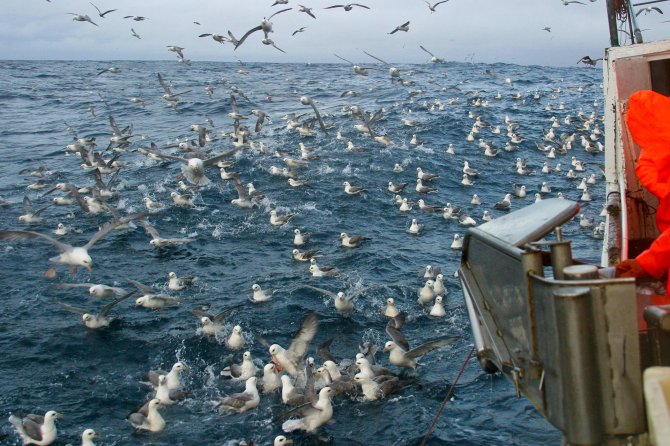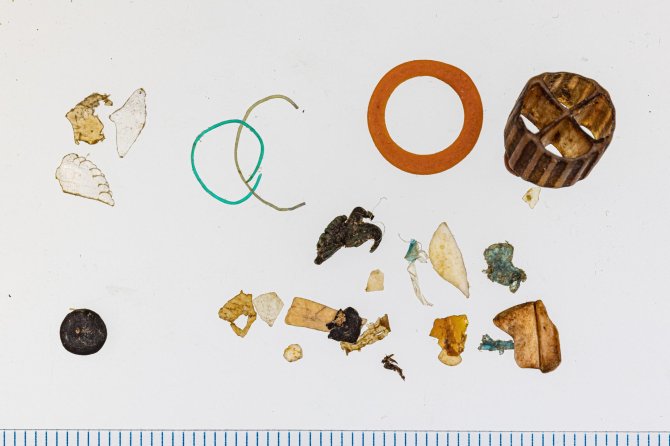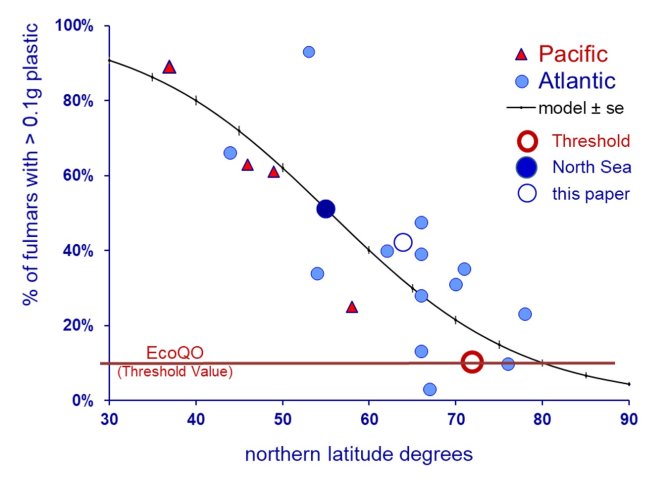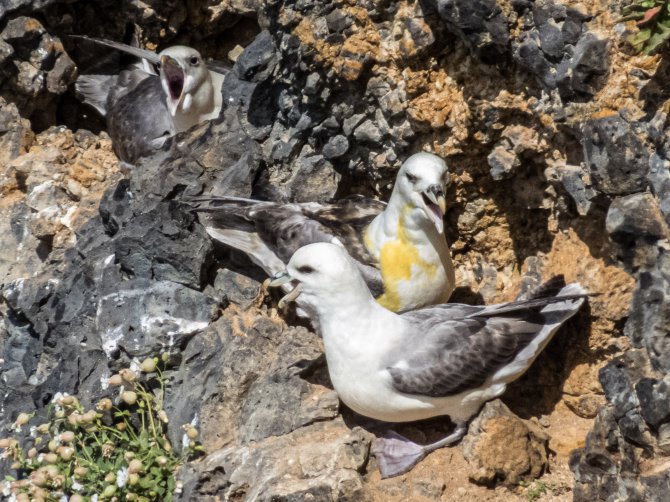
News
Regional differences in plastics in stomachs of Northern Fulmars
Our monitoring research on fulmars from the North Sea provides a constantly improving insight in temporal changes in plastic pollution in our region. But foreign colleagues and Wageningen Marine Research are also involved in more incidental studies of fulmars from totally different regions.

Fulmars from offshore east Greenland
We had the opportunity to study a substantial number of stomachs of fulmars that had been hunted about 100km off east Greenland. They were hunted for human consumption from a longline fishing vessel, and were caught traditionally with a big handheld net (fleygg) as also used to hunt birds at the cliffs near the colonies. Wageningen Marine Research recently published an article on the plastics in these stomachs. These fulmars held an average of 13.5 plastic particles in the stomach, with a mass of 0.14 g. Among 145 stomachs, 86% contained plastic, and 42% even more than 0.1 g. North Sea governments and the EU aim for a target in which this percentage is reduced to under 10%.

Less plastics in the North
The Greenland fulmars contained less plastics than those from the North Sea, where the average plastic mass is 0.26 g. The new sample triggered us to view all known fulmar studies from the North Atlantic Ocean, as well as those from the North Pacific. The result of this work shows a very clear pattern that fulmars from the more northern areas have ingested less plastic. There is a statistical significant relation beteen plastic in the stomach and the degree northern latitude where fulmars were collected. Northern waters are further away from the densely populated and industrialised areas, where pollution levels are high.

Old males have least plastics
The relation between plastic and latitude is significant, but also shows substantial local variations. In our paper we show that age and sex of sampled birds are influential. Young birds tend to have more plastic than older ones, females tend to have more plastic than males. Finally there may be a substantial seasonal influence. In fixed annual monitoring schemes such variations do not substantially affect the temporal patterns. But when starting a new monitoring scheme these factors must be taken into account. The variations in different incidental studies did not overshadow the larger scale regional latitudinal pattern. We explain the smaller variations in stomach contents by the frequency, duration and intensity of colony attendance. Older birds spend more time at the colonies than younger ones, males attend more frequently and longer and are more strongly involved in disputes over the nest site. During disputes over the nest or partnership, and also in defense against predators, fulmars may spit stomach oil, probably including some of the plastic. Adult breeding fulmars feed their proventricular stomach contents including plastics to their chicks during July and August.
